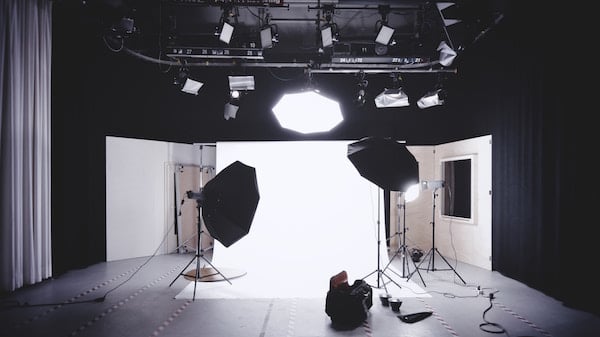Published on
Expanding Access to Digital Education: Making the Leap from “The Tube” to YouTube

In this interview, Brandon Arolfo discusses how PBS creates responsive online content for audiences at all stages of academic achievement, and explains how the organization is fulfilling its educational mandate in a modern world.
The EvoLLLution: What are PBS’s goals when it comes to supporting education for Americans?
Brandon Arolfo (BA): PBS is a near-universal media service that has been committed to producing and creating educational content for over 50 years. The educational content of our programming is a cornerstone of why PBS exists for the American public. It’s in our dramatic offerings, like Masterpiece Theatre, and in our science content. It’s in the content we create for PBS Kids and PBS Learning Media, which reaches over a million educators and vocational trades around the country. Finally, we’ve got PBS Digital Studios, where most of our programming is geared towards educational themes.
Everything we create in PBS Digital Studios, which includes a YouTube network of over 20 channels, is intended to be not only engaging and entertaining, but educational. One of the first questions that we ask ourselves when developing any new content is, “Yes, it’s going to be entertaining but what’s the educational component to this? What are people going to be able to take away from this?”
We always want to have education as the central thread that weaves through all of our content, and we do that by having subject matter experts deliver programming in a way that’s entertaining and educational. Hosts on a lot of our shows, like It’s Okay to be Smart, Space Time and The Origin of Everything are subject matter experts who have PhDs in their respective fields.
Evo: When people think about PBS’s educational content, they’re often thinking about your television programming. How has the shift to digital programming impacted PBS’s capacity to expand access to educational offerings?
BA: While people often think of PBS as television network, PBS and its member stations have been adopting new platforms and new technologies to bring the power of public media to Americans for years. The content we create includes great educational and entertainment programming, but it also includes images and curriculum resources. The PBS Learning Media team is massive. It reaches over a million educators across the country. Their content is all digital, and it includes resources for primary school educators up to AP-level curricula.
As part of the Digital Studios team, whenever we create a new YouTube channel or Facebook Watch page, we work with our producers to create accompanying educational curricula. We’ll deliver the videos and the content to the PBS Learning Media team, and we’ll work with them so that the curriculum, lesson plans, and everything else is incorporated into the content.
We know it’s important to meet audiences on the platforms they’re already using. For example, PBS Kids has a 24/7 app and a 24/7 channel. The app is available through OTT, Apple TV and Roku. We’re always looking for the next platform where our content can be the most impactful for different audiences.
Evo: Why is it so important to maintain PBS’s high-quality digital educational offerings when the programming isn’t for academic credit?
BA: It’s kind of ironic that education is known as the bedrock of society and progression, yet education—specifically academic education—is expensive and not always accessible. A lot of the communities and audiences we reach are lower income. They may not have access to high quality education, so a part of our core mission is to broaden access to educational resources.
Education is a fundamental human right. That is why expanding access to free education is a cornerstone of what PBS does.
Evo: You mentioned that PBS has programming that’s designed to support vocational education.
BA: At PBS Digital Studios, we are creating a slew of new content on Facebook Watch and YouTube that’s going to focus on helping Millennials open their minds to new job possibilities, and further their education about skills that they might not have learned in college that may be more trade- or vocation-centric.
It’s going to be a little bit like the educational equivalent of the show Dirty Jobs. It’s going to be entertaining, but it’s also going to introduce people to specific trades, and teach them how they could become a part of that trade. It’s going to help Millennials, specifically in rural communities, understand what job options they might have in their own backyard that they never considered.
Sometimes, the media in America is seen as a bit elitist. We want to tell people, look, you don’t necessarily have to move out of your city. You don’t have to move to the west or east coast to find good jobs.
Evo: Is PBS Digital Studios likely to explore partnerships with postsecondary institutions to continue expanding access to academic digital programming?
BA: It’s very likely. One of our biggest channels is Crash Course, which offers essentially college-level learning to new audiences. It is “post-school.” The courses range from astronomy to US history and politics to engineering to theater. The entire range of subject matter is arranged around AP-level curricula, and most of our resources for that channel go into research and expanding on college curricula that might not be available to everyone.
We’ve also got Space Time, which is another one of our YouTube channels. It’s hosted by PhD Matt O’Dowd. He’s an astrophysicist, and he is introducing astrophysics to a whole new audience of people. The great thing about Space Time is it caters to a niche audience that is ravenous to learn more about astrophysics. Those are just some of the examples of some of the shows that we’re producing that prolong education.
Evo: How is PBS broadening its approach to creating public access education?
BA: One of the beautiful things about PBS is that we’re not driven by the bottom dollar. Our success isn’t measured in terms of revenue—it’s measured by the impact that we’re having on the American public.
Television broadcasting is great and we can certainly measure its impact through focus groups, but the beauty of digital platforms is that we’re getting real-time data that allows us to adjust our programming. A lot of people don’t know how advanced PBS is when it comes to digesting data and responding to our audiences. I’m always an evangelist for getting that thought out there: We’re here for the American public.
This interview has been edited for length and clarity.
Author Perspective: Analyst


